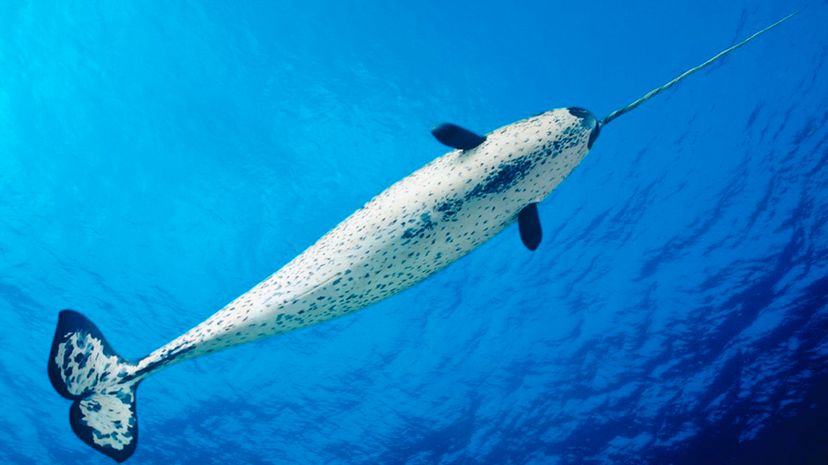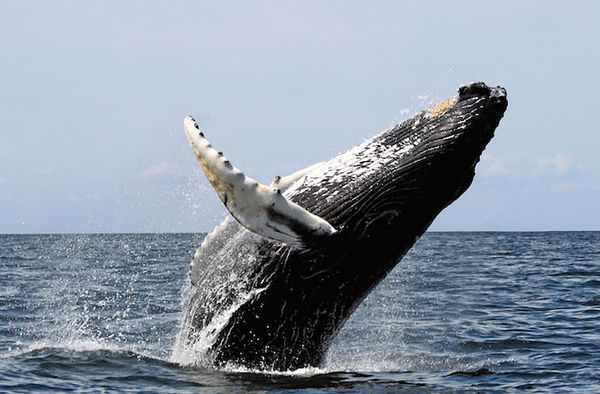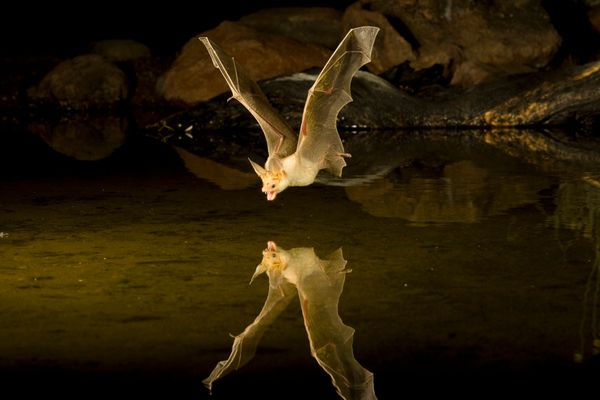
In a long list of funny-looking animals (platypus, blobfish, humans), the narwhal stands out for its unusual tusk. Unlike the rhinoceros' keratin horn, the narwhal's spiraled "unicorn horn" is an ivory left tooth — the right tooth is less prominent — that grows through its upper lip, up to 9 feet (3 meters) long. The protruding tooth may seem like a terrific tool to sword dinner or even joust with a rival, but the appendage is so sensitive it's unlikely narwhals use it to battle.
Recent drone footage of narwhals, shot by researchers from the World Wildlife Fund Canada and Fisheries and Oceans Canada in Tremblay Sound, Nunavut, presents a new theory for the tusk's function. Based on the video, the researchers posit that narwhals sometimes use the horn to give a light smack to unsuspecting fish, stunning them to allow for easier eating. It's the first time scientists have captured evidence that narwhals use their tusk to hunt, and you can see it by clicking play on the video below:
Advertisement
Filming with a drone allowed researchers to stay far enough from the narwhals to leave them undisturbed, while still providing never-before-seen detail about some of their hunting habits. The quick "tap" of the tusk left the fish immobile, which gave the narwhal an opportunity to easily suck up the fish.
The tusk isn't without controversy in the narwhal research community, though. While scientists generally agree that narwhals use the tusk to attract partners, some have suggested the whales may use it as a sensory tool to detect water salinity and temperature. And research shows narwhals have extremely advanced navigation and echolocation, rivaling pretty much any animal except the beluga whale — although the tusk may not be part of that system. Both female and male narwhals are excellent navigators, despite the fact that the female's tooth is generally much smaller and does not protrude through her lip.
Advertisement


